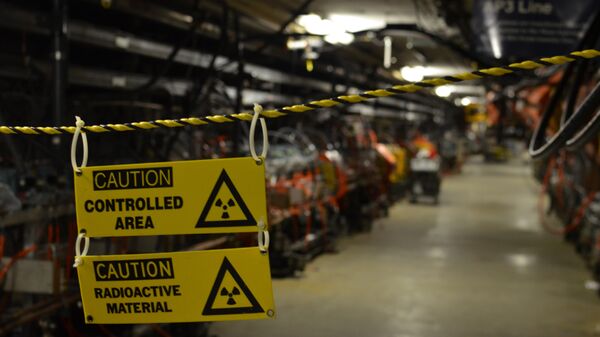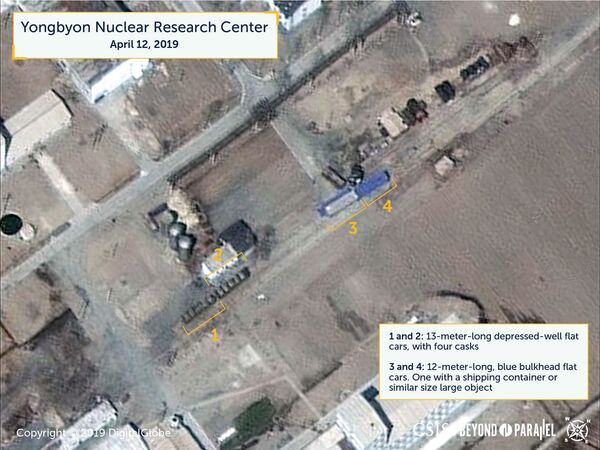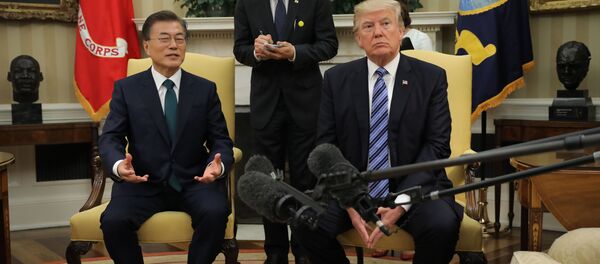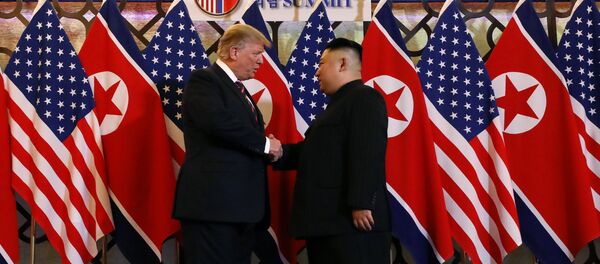Imagery collected by commercial satellite company Digitalglobe on April 12 showed some new developments at Yongbyon, North Korea's primary nuclear site. The photos show several specialized railcars that, in the past, "appear to have been associated with the movement of radioactive material or reprocessing campaigns," the think tank wrote in its April 16 report.
"The current activity, along with their configurations, does not rule out their possible involvement in such activity, either before or after a reprocessing campaign," report authors Joseph Bermudez and Victor Cha wrote.

The railcars in question include a 10-meter-long flatcar carrying four large casks, found about 500 meters from the radiochemistry plant; two 13-meter-long depressed-well flatcars carrying four large casks in the railyard for the site's uranium enrichment plant and isotope/tritium production facility; and two 12-meter-long blue bulkhead flatcars in the same railyard.
Likewise, a February report by Stanford University's Center for International Security and Cooperation, making use of open-source imagery, estimated DPRK "may have added sufficient plutonium and highly-enriched uranium for an additional five to seven nuclear weapons" at the Yongbyon complex, according to study co-author Siegfried Hecker.
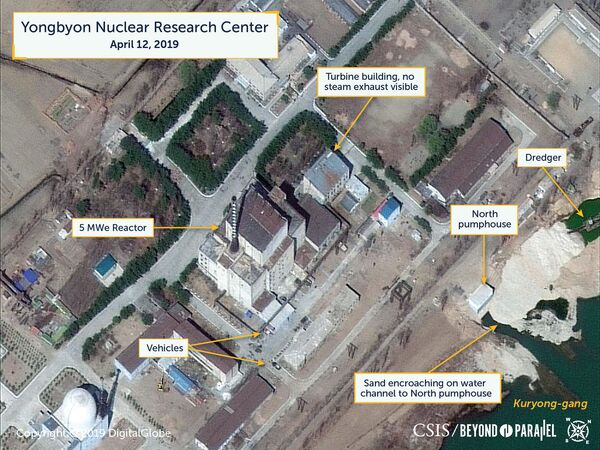
Thus, the CSIS report really indicates nothing certain at all — only the fact that CSIS can't explain some railcars at the facility. While it's true that those cars have, in the past, been associated with nuclear fuel production, it's equally true to state that in the past there are also examples from which they weren't associated with nuclear fuel production. Since nothing else at the site points to that, it seems like the salient point would be that it's still not happening despite the failure of the most recent US-Democratic People's Republic of Korea (DPRK) summit.
North Korean leader Kim Jong Un and US President Donald Trump walked away from the negotiating table in Hanoi on February 28 without any more of a denuclearization deal than they had before, leading many to speculate that Kim might revive his country's nuclear weapons and ballistic missile programs. Testing and production of those weapons has been placed on hold by the isolated socialist country for over a year in a show of goodwill in favor of the prospect of peace.
A June 12, 2018, summit between Kim and Trump produced a vague framework for denuclearization and a commitment to its achievement, but negotiations have stalled since August 2018, when Washington made clear it wouldn't remove strangling economic sanctions on the DPRK until it took steps toward verifiable and irreversible denuclearization.
In September, Pyongyang offered to dismantle the site at Yongbyon and invited inspectors to tour the facility, Sputnik reported, but the offer remains unanswered. The move followed demolitions at several key North Korean sites, including the Sohae satellite launch site at Tongchang-ri and the country's primary nuclear weapons testing facility at Punggye-ri.

